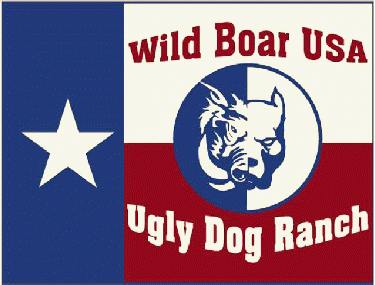This is what I sent in to the Full Cry magazine several years back...
The 2 dogs that were winding into the wind were mostly mtn cur. One was 1/2 Texas Smoke bred original mtn cur and 1/2 kemmer mtn cur mostly from the old Gold Nugget line. Robert Kemmer told me it was Blondie who put the nose in to Gold Nugget who was his dam. The other dog was 1/4 BMC, 1/4 original mtn cur and 1/2 Texas Smoke mtn cur.
Winding Ability
Back in the mid 1960’s one of my dad’s friends caught a small wild shoat in Laredo, Texas. Paul told us that he was rooting around in a dry creek and that he went around to the high bank of the creek and jumped down on top of him. It sounded a little far fetched to me but 45 years later he tells the same story. We went over to see the small pig and he was white with black and brown spots. I had never seen a wild hog before then; they were unheard of in Edna at that time as well as the surrounding areas. He became a pet and would go in and out of Paul’s house. Once this hog got older he was kept in the pig pen because he was starting to get aggressive. When this hog weighed about 3 hundred pounds he jumped out of his pen and was circling our pig pen early one morning. It just so happened that we had a Duroc sow that was in season at the time.
It was my routine to get out of bed early and take a look outside for any wild game wandering around too far from the rose hedges. Too far meaning that my dogs could catch the game before it could make it to the rose hedges. If the game was to close to the hedges I wouldn’t send the dogs because once the game animal reached the hedges it was useless to try and catch it. The hedges covered several acres not to mention the fence rows. As kids, my younger brothers and I cut out tunnels and also made a club house in these hedges with our machetes. For those of you who have never seen these hedges, the best way to describe them is that they have thorns and are evergreen. They can get thick enough so that a barb wire fence does not have to be repaired or maintained once they cover the fence. Cattle will not try to cross these hedges.
Well that morning I looked out as usual and saw this large boar hog and recognized him immediately. It was Paul’s wild boar, I called my dogs and sic’ed them on this hog. This hog looked liked he was spring loaded and he was super quick. I instinctively thought that he could hurt my dogs badly so I called them off. I used to sic my dogs on our neighbors hog that would get in our field and this hog was huge but my dogs would put a lot of heat on him to the point that I would have to call them off to keep from doing to much damage to this domestic hog. Even though the hogs were of about the same size there was no comparing them. I told my dad about Paul’s hog was circling our pig pen. My dad went and let him in the pen and then we went to Paul’s house to let him know. We got the hog back to Paul’s house at a later date. Several months later we had ten piglets.
I knew this hog showed up at our house because our sow was in heat. For years I used to wonder and was amazed at the ability to smell/wind the distance that this hog smelled our sow. It just so happens that the lease I have now is owned by Paul in my old home town of Edna, Texas. The house he lived in back then has been bulldozed down to build a freeway. Our old house was torn down to expand the farm land but the culvert is still there as well as a few trees my dad planted.
I had to know the exact distance between these two houses or close to it so that I would know just how far this hog winded our sow. I went to the lease the other day and while there I made the time to swing by to try and determine the distance, I used my odometer from my truck to see how far it was. I got a reading of 1.9 miles. At home I put it on paper and that calculation came out to a little over two miles. This is simply amazing to me.
Back in the early 1980’s a professor from Georgia or Mississippi, I can’t remember which college, came up with a liquid formula to test the scenting ability of newborn pups. The article was in the Outdoor Life Magazine. I lost this magazine in a flood so I can not go research this. But he used about five different diluted levels of formula to test the scenting power. He said that all pups from the different breeds he tested tested about the same but that the English Pointers consistently scored the highest for scenting ability. As usual I have a few questions or concerns about this data. From past experience data collecting can be inadequate due to the data collector’s inability in looking at the big picture, or the system causes the testers to develop tunnel vision in their data collecting. The idea is a good one if done right. If the English Pointers have the best nose at this age but the Bloodhounds have a somewhat lower test score does this insinuate that the pointers have a better nose? Once these dogs are full grown the Bloodhounds are considerably larger. Do they develop a better nose at a later time because they have a larger nose and therefore more scenting receptors, or is it more area for the scenting receptors to work more efficiently? My belief is that scenting ability varies but that one big factor is that the dog breed has a lot to do with what the dog will do or is inclined to do. Just like retrievers want to retrieve and pointers want to point and bloodhounds like to trail cold tracks, different breeds will use their noses according to what they were bred to do. Sight hounds will run with the pack but primarily are looking for the game while most scent hounds are willing to trail even on a cold track. I also believe that some dogs can smell a track but will not take it because they are not inclined or motivated to take it simply because it is too old, does not excite them, and/or are not interested.
The main reason why I like the mountain Cur breed is that they can trail an older track but most prefer a hotter track. They also use their eyes and their noses to wind and locate the game they are hunting. They have the natural inclination to use their noses in a variety of ways. I believe that this is one reason of many, as to why they are so popular today. I will give several examples on the mountain Cur winding ability. My friend Stephen Plummer and I were hunting hogs on a big ranch that he worked on. He knew that the hogs were located away from the woods in the prairie. The prairie was brushy and as we were riding the 4 wheelers I noticed that two of the Cur dogs raised their noses to the oncoming wind and went into the brush, circled and came back out. I told Stephen to hold up because I knew the dogs were smelling hog. Stephen said he knew where the hogs were at for sure so we kept moving to the planned location. We got there and we caught several hogs. On the way back the same two dogs were winding again at the same location. I turned my wheeler in to the wind and went in through the brush. Right away I saw the problem. The wind was skimming over the brush so when the dogs went in they would lose the scent. We looked over and saw where the brush was extra thick and it looked like a good place to hold hogs. It appeared to be close to half a mile away. We started moving in that direction and once the dogs caught the scent again they were off and within a few minutes had one caught and once the big sow was secured they were off on the trail of another hog and that one was caught before it made it to the woods. The hog hunt favors the dogs in open country. Another time the dogs were winding and started moving in to the wind. I told Stephen that I thought the hogs were about a quarter of a mile away in a wooded patch. The dogs passed that section of woods and kept going. Stephen comments that the hogs usually hang out further down in the thick woods and brush. He was right, the dogs struck but did not catch any on that hunt. The dogs winded these hogs close to three quarters of a mile in distance. The wind conditions were right and these dogs had the inclination/breeding to go the distance. I’ve seen these dogs running a hog through the thick woods and brush at a fairly good pace and when the hog crossed the right of way the dogs were about fifty yards behind and about 20 yards to the downwind side. The dogs I’m talking about are mainly a cross between Texas Smoke and Kemmer blood. I Give thanks to HB White, AC Zoeller, Alton Davison and a few others for helping me in finding these dogs. Thanks for reading.



